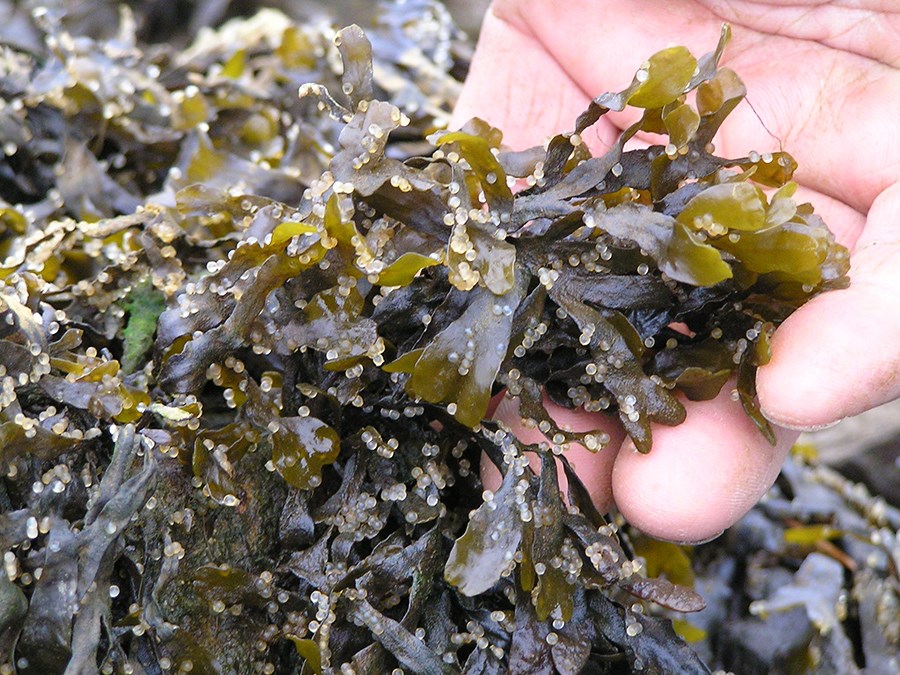Herring are returning to Howe Sound.
Squamish Streamkeepers’ Society members recently discovered large new herring spawn around the pilings at Squamish Terminals, according to Jonn Matsen of the society.
Herring roe were seen on kelp around the south perimeter of the terminals through to the east dock and to the north of it, according to Matsen.
Matsen said several billion herring eggs seen three weeks earlier had hatched.
Numerous gulls and other birds were feeding on the roe on the kelp, he said.
Herring are an important part of the marine ecosystem. “Herring eat the phytoplankton and everything else eat herring, that is why you see dolphins and orcas,” Matsen explained.
“The chinook and coho salmon should be feeding a lot more really now that the juvenile herring are back.”
Herring are a tough species needing only two things, according to Matsen. They need a protected spawning area, with some kind of material to spawn on – such as under the docks at Squamish Terminals – and they require a rearing area.
“There are millions of tons of plankton out in the ocean that has gone unused because most of the nice protected rearing spots are now marinas,” he said.
In 2006, the Streamkeepers found dead herring eggs on creosote-treated piling under the Squamish Terminals dock, so that year the Streamkeepers wrapped about 60 pilings with a material that was safe for herring, because creosote is toxic to the fish. In 2007, the group saw its first spawn on the wrapped pilings. “It was close to a 100 per cent hatch out rate, which is unheard of in the herring world,” Matsen said.
The herring results have been increasing steadily year over year, according to Matsen. “We have stumbled on to a little insight here that is quite dramatic, and that is that using the artificial materials in place of the vegetation are working quite dramatically.”
The Streamkeepers have been adding wraps to pilings every year since then. About 450 wrappings have been done to date. The group is aiming to wrap approximately 100 to 200 pilings every year until all 500 or so pilings in the area are wrapped.
In March of last year there was a large return of dolphins to Howe Sound; dolphins feed on the herring spawn.
There used to be huge herring runs in Squamish back in the 1960s, Matsen said. “It was about a 2,000 to 3000-ton herring run in Squamish.”
Sea lice from fish farms are the biggest threat to the whole marine food chain, especially for salmon, according to Matsen.
“The mid-coast area is almost a desert as far as healthy fish stalks go,” he said. “And now there is a move to put more salmon farms in.”
Matsen said Telus and Squamish Terminals have helped fund the society’s herring program.
“We need some politicians to straighten out the mid-coast with the salmon farms, because that is really the root of the decline of these species,” Matsen said.
For more information, go to the Squamish Streamkeepers Facebook page.



